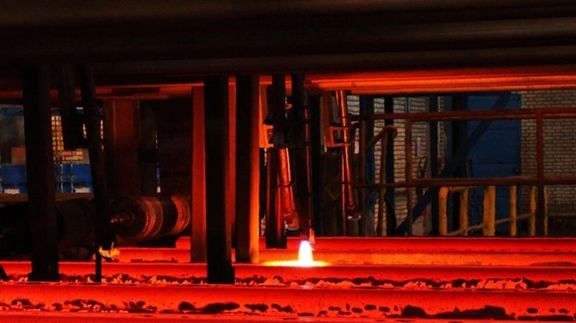Iran Losing Steel Export Markets, Industry Insider Says

A member of the Iranian Steel Producers Association has warned that the country may lose its foreign steel markets if a recent plunge in exports continues.

A member of the Iranian Steel Producers Association has warned that the country may lose its foreign steel markets if a recent plunge in exports continues.
Reza Shahrestani told Etemad Online Wednesday that in the first four months of the Iranian calendar year (started March 21), Iran’s steel exports dropped by 900,000 tons in comparison with the same four months in the previous year. During March 2021-March 2022 Iran exported a total of 4.2 million tons of various types of steel. The drop has reduced export revenues by $700 million, he said.
“We will lose our markets if this trend continues in the coming months,” he warmed while predicting a total loss of $2.5 billion in export revenues for the whole year if the trend continues.
Shahrestani blamed the government for imposing heavy export duties after steel prices rose in international markets due to the Russia-Ukraine conflict. “They didn't heed our advice no matter how strongly we objected to their decision arguing that Russia was dumping its steel products in international markets by offering huge discount.”
Shahrestani told Shargh newspaper in Tehran in May that Iran’s biggest customers --China, Afghanistan, Thailand and South Korea -- had shifted their orders to Russia as it was offering discounts of 15-20 percent on its steel and the impact on Iran’s traditional markets was already noticeable.

According to a report by the World Steel Association in June, Iran's crude steel production had dropped 17.6% year-on-year in May to 2.3 million tons following a plunge of 20.7 percent to 2.2 million tons in April.
The decline in Iran’s crude steel production in April and May impacted its overall number for 2022. While its production level was normal until end of March, the reduction in that month turned its balance sheet negative for 2022. It produced 11.4 million tons of raw steel in January-May 2022, about 10.8% less than the same period in 2021. Iran is the tenth largest producer of crude steel in the world
Shahrestani also pointed out that few international companies trade with Iran's steelmakers due to US sanctions and the need to circumvent them. “Many European, Japanese, and Korean companies will not trade with us. [On the other hand,] Russia stole our markets with huge discounts when it was sanctioned, and we lost our opportunities.”
He refused to disclose the names of the countries that import steel from Iran despite the sanctions. “Due to the sanctions such statistics better not be published. But many neighbouring countries and countries in the Far East trade with us,” he added.
Shahrestani told Etemad Online that revival of the 2015 nuclear deal (JCPOA) with world powers, can have a positive impact on reviving steel exports.
Domestic demand for steel is currently sluggish because the market is waiting for a nuclear agreement and there is uncertainty about foreign exchange rates, he said. Without a deal the exchange rate the US dollar can jump by as much as 50 percent which can harm the steel industry.
Amid United States' sanctions on Iran's oil exports, steel is one of the main exports earning foreign currency for the government, which faces a serious financial crunch.
Iran has tried to compensate for loss of oil revenue by boosting non-crude exports of petrochemicals and steel in the four years since former US President Donald Trump withdrew from the 2015 deal and imposed oil export sanctions.